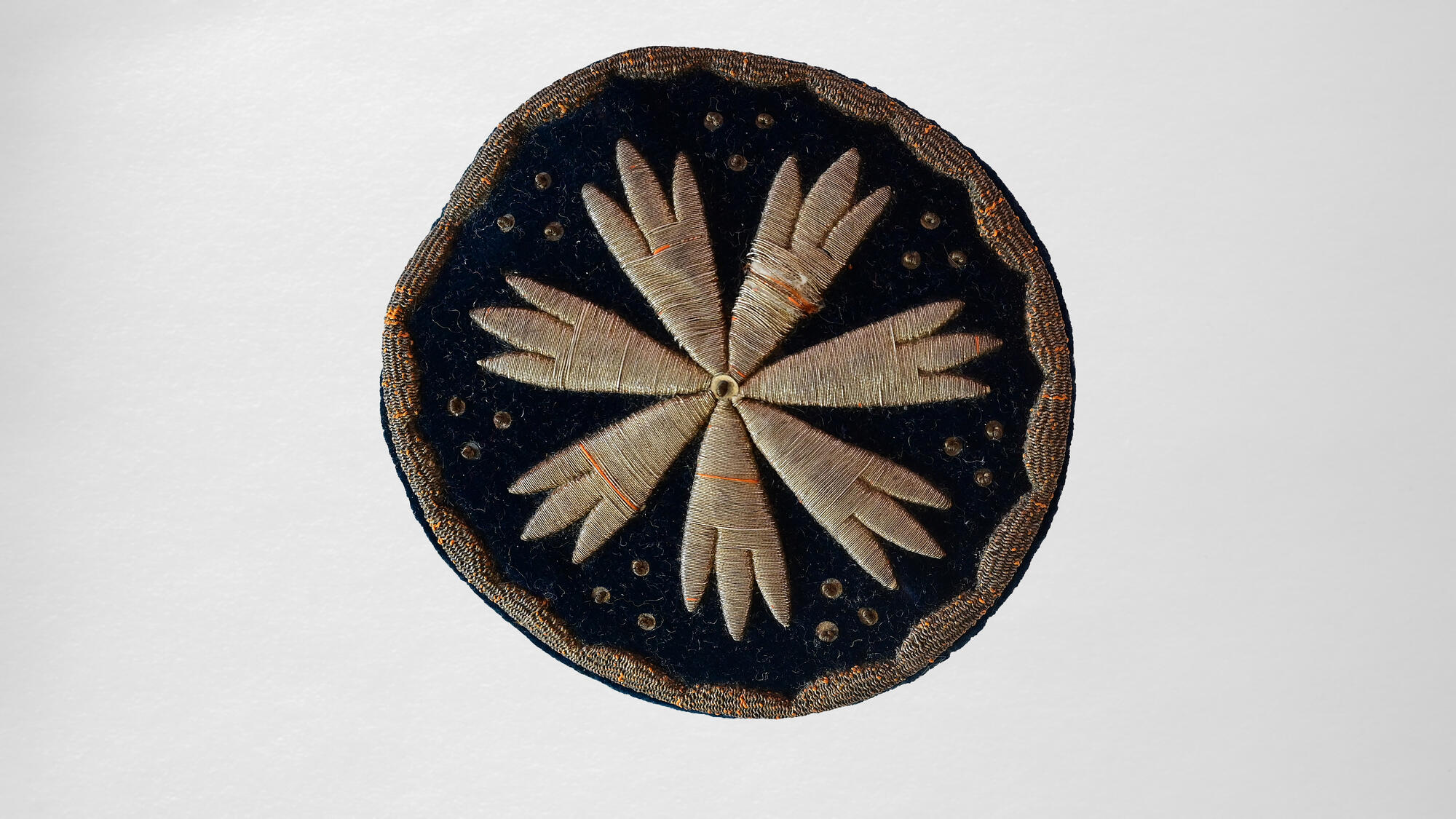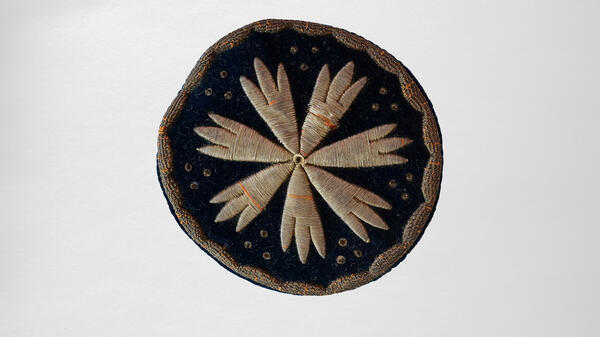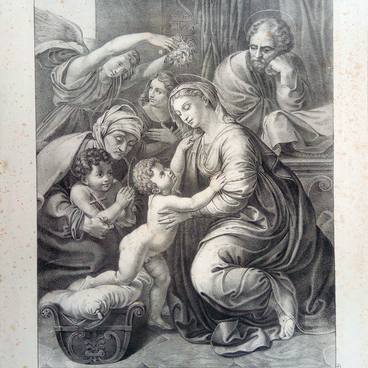The pincushion made in the first half of the 19th century is displayed in the museum. The front side is made of black velvet, the reverse is covered with blue silk. There is a firm cardboard insert between them. A rosette in the shape of a blue cornflower is embroidered in metallic gold thread against the black background in the center of the item. Small beads and paillettes (sequins) are sewn in between the petals.
The word ‘paillette’ originates from French and means ‘a golden grain’. Paillettes are shiny small flat or embossed scales with a hole for a thread. Usually, they are round or multi-faceted.
Centuries ago, pincushions were made of fabric and stuffed with paper. In time, people began to make them of wood or ivory, and even tin, silver, and gold. Only wealthy women could afford such pincushion.
Peasant women made pincushions from all sort of materials available to them. Pincushions could be square or round. They had quaint shapes and were decorated with embroidery, webbing, and ribbons.
Pincushions were never made in the shape of animals or human figures, as people did not want to stick needles into them. It was believed that needles possess magical powers and can harm a living being, if one is too careless.
In the 16th and 17th centuries, pincushions were fixed inside caskets for needlework or to all kinds of stands to facilitate getting out or removing needles when sewing. They were made of high-quality fabrics such as linen and satin, and beautifully embroidered.
In the 18th century, small pincushions were tied to the rings on scissors with a long ribbon, while one end of this object was attached to the belt so that both needles and scissors were always at hand.
In the 19th century, pincushions acquired greater popularity as decorative items. They could look like egg cups or small baskets and were fixed on metal, glass, or porcelain stands.
At the beginning of the 20th century pincushions with a clipping mechanism became widespread. They could be fixed onto tables to prevent fabric from slipping.
The word ‘paillette’ originates from French and means ‘a golden grain’. Paillettes are shiny small flat or embossed scales with a hole for a thread. Usually, they are round or multi-faceted.
Centuries ago, pincushions were made of fabric and stuffed with paper. In time, people began to make them of wood or ivory, and even tin, silver, and gold. Only wealthy women could afford such pincushion.
Peasant women made pincushions from all sort of materials available to them. Pincushions could be square or round. They had quaint shapes and were decorated with embroidery, webbing, and ribbons.
Pincushions were never made in the shape of animals or human figures, as people did not want to stick needles into them. It was believed that needles possess magical powers and can harm a living being, if one is too careless.
In the 16th and 17th centuries, pincushions were fixed inside caskets for needlework or to all kinds of stands to facilitate getting out or removing needles when sewing. They were made of high-quality fabrics such as linen and satin, and beautifully embroidered.
In the 18th century, small pincushions were tied to the rings on scissors with a long ribbon, while one end of this object was attached to the belt so that both needles and scissors were always at hand.
In the 19th century, pincushions acquired greater popularity as decorative items. They could look like egg cups or small baskets and were fixed on metal, glass, or porcelain stands.
At the beginning of the 20th century pincushions with a clipping mechanism became widespread. They could be fixed onto tables to prevent fabric from slipping.



